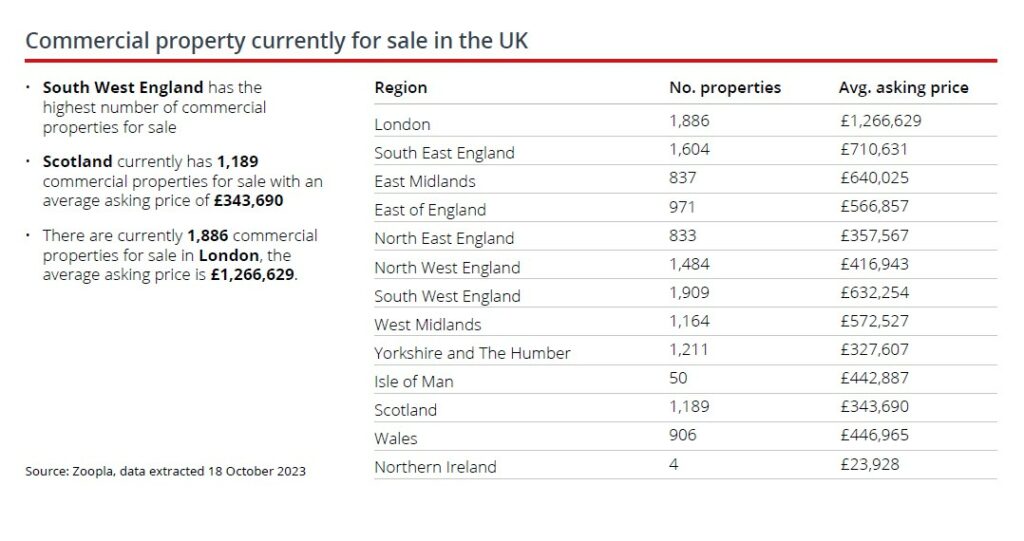Industrial and warehouse space in demand
New analysis has highlighted that the most in-demand UK commercial property sector currently is industrial/warehouse space, as companies look to facilitate and improve their ability to deliver online purchases to customers as efficiently as possible.
According to data from Sirius Property Finance, buyer demand for hospitality and leisure assets continues to be subdued. As cost-of-living pressures weigh on consumers’ pockets, many are choosing to tighten up their household spend on leisure and hospitality pursuits, dampening investors’ appetite for space.
Warehouse and industrial space remain in “rude health” according to Nicholas Christofi, Managing Director of Sirius Property Finance, who added, “It’s the one corner of commercial property that thrives in partnership with the internet as more and more businesses look for ways to fulfil the logistical requirements of online retail.” From a regional perspective, the West Midlands is seeing the highest demand with 43.2% of listed stock sold subject to contract. The largest quarterly uptick in demand was from the South West, at 3.8%.
Office space demand in England is registering 27.6%, a quarterly fall of 2.7%, while retail space demand is 23.5%, a quarterly reduction of 0.9%. Looking at office and retail space, Christofi highlighted that although demand is subdued, “an awful lot of thought is going into how to reimagine the way such spaces are used and how to bring vitality back to what was, not so long ago, a vital part of our nation’s ecosystem. For savvy investors and equally savvy developers, the opportunities presented by this evolution are immeasurable and it’s truly exciting to see what our relationship with retail and office space becomes.”
Buy-to-let landlords focus on commercial property
For buy-to-let landlords disillusioned by lacklustre returns and high taxes, new research from specialist lender Shawbrook, shows an enhanced interest in commercial property for those looking to diversify their investments away from residential assets.
Almost a fifth (19%) of landlords are contemplating commercial property investment, while over a third (35%) who already own commercial property within their portfolio are looking to expand their assets in this area. This comes at a time when the high street focus is on local independent shops, which Shawbrook says is emphasising ‘the importance of good commercial properties in towns and cities.’ Accordingly, those with larger property portfolios are more likely to have already entered the commercial sector as landlords seize the opportunity to support communities.
Managing Director of Real Estate at Shawbrook, Emma Cox commented on the trend, “Fluctuating prices and high borrowing costs are hampering confidence in the residential property sector… The increase in workers returning to offices and the evolution of local high streets are two examples of areas where landlords will be seeking opportunities to invest, and those who already own commercial properties will be looking to add more.
She continued, “Landlords could become the unsung heroes of the high street, with many planning to support their local communities by injecting new life into commercial properties and retail units.”

Realistic pricing and growth prospects motivate investors
Savills most recent Market in Minutes, analysing the UK commercial property market, has outlined that although interest rates aren’t expected to start falling until the third quarter of 2024, ‘the fact that investors can now start to believe that the next move is downwards will be important for market pricing and activity over the next six months’.
Their investment sentiment survey highlighted that 80% of respondents plan to invest in UK commercial property during the next 12-month period, motivated by realistic pricing versus other markets and growth prospects.
Those sectors where potential purchases can appreciate the combination of yield strengthening and robust rental growth prospects will experience pricing recoveries first. Savills believe prime logistics and office space in the West End of London to ‘lead the recovery phase of this cycle.’
The most notable downward shift in sentiment was evident with Central Business District (CBD) office space. When surveyed in 2022, half of investors intended to deploy capital into that sector, with only 29% saying the same in the 2023 survey. Despite the challenges the office sector has faced, Savills anticipate change as, ‘it becomes more widely recognised how strong the prime office market actually is.’
All details are correct at the time of writing (19/10/23)
It is important to take professional advice before making any decision relating to your personal finances. Information within this document is based on our current understanding and can be subject to change without notice and the accuracy and completeness of the information cannot be guaranteed. It does not provide individual tailored investment advice and is for guidance only. Some rules may vary in different parts of the UK. We cannot assume legal liability for any errors or omissions it might contain. Levels and bases of, and reliefs from, taxation are those currently applying or proposed and are subject to change; their value depends on the individual circumstances of the investor. No part of this document may be reproduced in any manner without prior permission.
